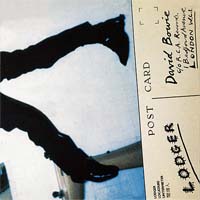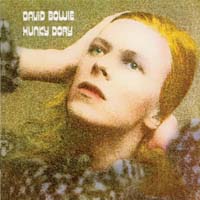Artist: David Bowie Album: Station to Station
Year: 1976Duration: 37:50
A Critical Review of Station to Station by David Bowie: A Glam Rock Classic?
David Bowie remains one of the most influential and innovative musicians of the 20th century. He was an artist who continually reinvented himself and whose music paved the way for many different genres. In 1976, Bowie released Station to Station, his tenth studio album, which mixed funk, rock, and avant-garde styles into a heady brew. The album has since become a classic of the glam rock era, and fans still debate its merits today. In this blog post, we will take a critical look at Station to Station, examining the artist's history, the musical style of the album, its best songs, and its most innovative parts.
First, a brief history of David Bowie. Bowie was born in London in 1947 and began his career in the mid-1960s as a folk singer. During the '70s, he became famous for his androgynous image and his chameleon-like ability to switch musical styles. His most famous albums from this era include Hunky Dory, The Rise and Fall of Ziggy Stardust and the Spiders from Mars, and Aladdin Sane. In the latter half of the '70s, Bowie began to explore more experimental genres, culminating in the release of Station to Station in 1976.
Station to Station marked a departure from Bowie's previous outings, particularly the glam rock of Ziggy Stardust. The album's sound was heavily influenced by soul and funk, although it still retained the artist's experimental edge. The album's opening track, Station to Station, begins with a mournful train whistle and then explodes into a funky, disco-inspired number with Bowie's voice front and center. Golden Years is another standout track, with its disco beat and soulful backing vocals. TVC15, with its haunting synth melody and guitar solos, is another classic.
One of the most innovative parts of Station to Station was Bowie's use of cut-ups. Cut-ups were a technique Bowie borrowed from writer William S. Burroughs, which involved taking different pieces of text and randomly rearranging them. Bowie used this technique to create the lyrics for songs like TVC15 and Stay, giving them a surreal and dreamlike quality.
Despite its critical and commercial success, Station to Station has received some criticism over the years for its lack of cohesiveness. Some critics have argued that the album doesn't flow as well as previous Bowie efforts, and that the songs stand alone rather than coming together as a cohesive whole. Additionally, fans have noted that the album has a darker, colder tone than previous Bowie records, reflecting the artist's growing persona as the Thin White Duke.
In conclusion, Station to Station is a classic album that showcases Bowie's ability to reinvent himself and explore new musical styles. Its mixture of funk, rock, and avant-garde sounds has influenced countless artists since its release, and its innovative use of cut-ups gives it a unique flavor. However, the album is not without its flaws, and some critics have argued that it lacks the cohesiveness of Bowie's earlier records. Despite these criticisms, Station to Station remains a landmark album of the glam rock era and an essential part of Bowie's legacy.
David Bowie albums
Other #Pop albums:
SIMILAR BANDS
balls, from 1 to 5, describe similarity between the two bands
SOMETHING NEW? LISTEN TO RADIOGENRE
 Ruby Recordings
Ruby Recordings Meditation Music
Meditation Music Trip hop
Trip hop Tuning
Tuning Funk
Funk Spanish trap
Spanish trap Industrial metal
Industrial metal Psychedelic rock
Psychedelic rock World Music
World Music Boogie-woogie
Boogie-woogie
SUGGESTED PLAYLISTS












































 Criminal Minds Songs
Criminal Minds Songs The origins of Ska
The origins of Ska Freedom
Freedom Acid Jazz music
Acid Jazz music Reality surpasses fiction
Reality surpasses fiction The very best of pizzica
The very best of pizzica The atmosphere of the jazz swing nightclubs
The atmosphere of the jazz swing nightclubs The Songs of Girls5eva, serie tv soundtrack
The Songs of Girls5eva, serie tv soundtrack Deep dub, minimal forests
Deep dub, minimal forests